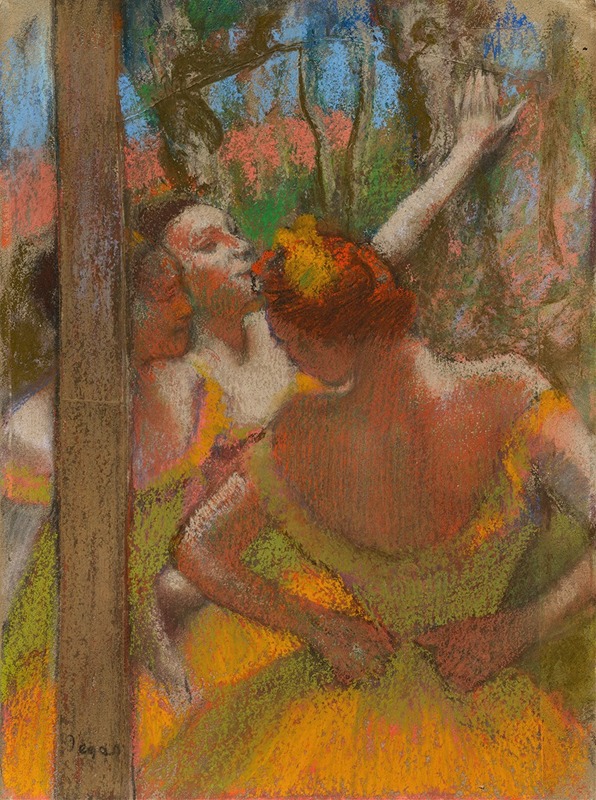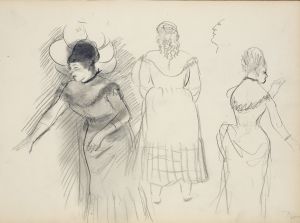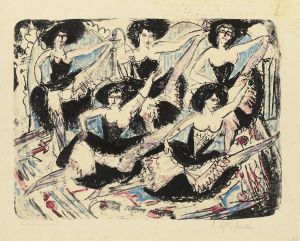
Dancers
A hand-painted replica of Edgar Degas’s masterpiece Dancers, meticulously crafted by professional artists to capture the true essence of the original. Each piece is created with museum-quality canvas and rare mineral pigments, carefully painted by experienced artists with delicate brushstrokes and rich, layered colors to perfectly recreate the texture of the original artwork. Unlike machine-printed reproductions, this hand-painted version brings the painting to life, infused with the artist’s emotions and skill in every stroke. Whether for personal collection or home decoration, it instantly elevates the artistic atmosphere of any space.
Edgar Degas, a prominent French artist associated with the Impressionist movement, is renowned for his depictions of dancers. One of his notable works, "Dancers," exemplifies his fascination with the ballet and his innovative approach to capturing movement and the human form. Degas's interest in dance began in the 1870s and continued throughout his career, resulting in numerous paintings, pastels, and sculptures that explore the theme.
"Dancers" is a term that can refer to several of Degas's works, as he created multiple pieces featuring ballet dancers in various settings and poses. These works are characterized by their dynamic compositions, attention to detail, and the use of light and color to convey the atmosphere of the ballet. Degas often depicted dancers in rehearsal or backstage, offering a glimpse into the behind-the-scenes world of the ballet, which was a novel perspective at the time.
Degas's technique in these works is notable for its use of unusual angles and cropping, influenced by the advent of photography and Japanese prints. He often captured dancers in candid, informal moments, rather than in posed, formal positions. This approach allowed him to explore the physicality and grace of the dancers, as well as the strenuous nature of their art. His use of pastels in many of these works enabled him to achieve a soft, luminous quality, enhancing the sense of movement and fluidity.
One of the most famous pieces in this series is "The Dance Class" (La Classe de Danse), completed in 1874. This painting is housed in the Musée d'Orsay in Paris and depicts a group of dancers in a rehearsal studio, with a ballet master observing their practice. The composition is carefully arranged, with dancers in various stages of movement, creating a sense of depth and activity. Degas's attention to detail is evident in the depiction of the dancers' costumes, the texture of the wooden floor, and the play of light across the room.
Degas's exploration of the theme of dance was not limited to paintings. He also created numerous sculptures, such as "Little Dancer of Fourteen Years," which further demonstrate his interest in the form and movement of the human body. This sculpture, made of wax and dressed in a real tutu and ballet slippers, caused a sensation when it was first exhibited in 1881 due to its realistic portrayal and unconventional use of materials.
Throughout his career, Degas's works featuring dancers were met with both admiration and criticism. Some contemporaries appreciated his innovative approach and the insight he provided into the world of ballet, while others were less enthusiastic about his departure from traditional artistic conventions. Today, Degas's dancer paintings and sculptures are celebrated for their technical mastery and their contribution to the development of modern art.
In summary, Edgar Degas's "Dancers" series is a testament to his skill as an artist and his deep interest in the world of ballet. Through his innovative compositions and techniques, Degas captured the beauty and complexity of dance, leaving a lasting impact on the art world. His works continue to be studied and admired for their unique perspective and artistic excellence.


















